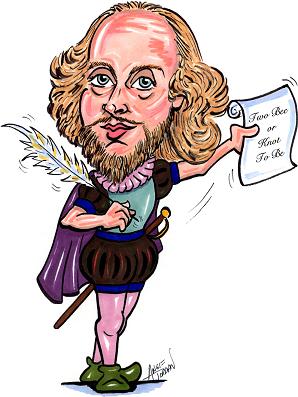“I looked at her face and looked so deeply that I felt I was behind her eyes and all at once I found myself saying, as tears flowed, ‘That’s me. That’s me!’
“And those simple words brought back many thoughts that I had had before, about the fusion of our souls into one higher-level entity, about the fact that at the core of both our souls lay our identical hopes and dreams for our children, about the notion that those hopes were not separate or distinct hopes but were just one hope, one clear thing that defined us both, that wielded us into a unit, the kind of unit I had but dimly imagined before being married and having children. I realized that though Carol had died, that core piece of her had not died at all, but that it had lived on very determinedly in my brain.”...
Carol’s death brought home that when people communicate, they send out little flares into each other’s brains. Friends and lovers create feedback loops of ideas and habits and ways of seeing the world. Even though Carol was dead, her habits and perceptions were still active in the minds of those who knew her.
Carol’s self was still present, Hofstadter sensed, even though it was fading with time. A self, he believes, is a point of view, a way of seeing the world. It emerges from the conglomeration of all the flares, loops and perceptions that have been shared and developed with others. Douglas’s and Carol’s selves overlapped, and that did not stop with her passing. ...
...I find Hofstadter’s social, dynamic, overlapping theory of self very congenial.
It emphasizes how profoundly we are shaped by relationships with others, but it’s not one of those stifling, collectivist theories that puts the community above the individual.
It exposes the errors of those Ayn Rand individualists who think that success is something they achieve through their own genius and willpower.
It exposes the fallacy of the New Age narcissists who believe they can find their true, authentic self by burrowing down into their inner being. There is no self that exists before society. ...
Finally, it points toward a modern way of understanding how people fit into society. In the 19th century, Marx thought that people were organized according to their material interests and their relationship to the means of production.
In the information age, it seems fitting that we’d see people bonded by communication. It’s not exactly new to say that no man is an island. But Hofstadter is one of hundreds of scientists and scholars showing how interconnectedness actually works. What’s being described is a vast web of information — some contained in genes, some in brain structure, some in the flow of dinner conversation — that joins us to our ancestors and reminds the living of the presence of the dead.
Brooks can be interesting and usefully provocative when he stays away from politics (or, as here, when he is edited to snip out his political allusions and illusions...). And this theory does too little with culture, with reading, with institutions and their impact on identity. But as one living with recent loss, and fears of other loss, it is intriguing. The language of philosophy (and of bioethics) does far too little with themes of interconnectedness, and is much the poorer for it. Perhaps one of the strengths of religious thought is its focus on connectedness, with fellow humans of this and other times, and with some notion of the divine (perhaps the ultimate metaphor for the interrelatedness of all). I don't think the recent crop of atheist authors quite get that, or its significance. I am willing to stand corrected on that.


No comments:
Post a Comment